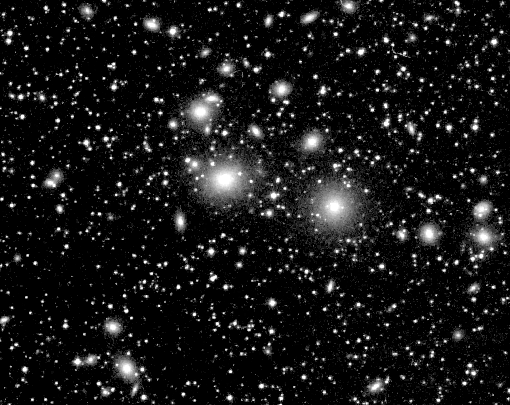The Perseus Cluster of Galaxies

Credit & Copyright: Digitized Sky Survey (ROE),
SkyView
Copyright: STScI,
AAO, UK-PPARC, ROE
Explanation:
Here is one of the largest objects that anyone
will ever see on the sky. Each of the fuzzy blobs in the above
picture is a
galaxy, together making
up the
Perseus Cluster,
one of the closest
clusters of galaxies.
We view the cluster through the foreground of faint stars in our
own
Milky Way Galaxy. It takes light
roughly 300 million years to get here from there, so we only see
this cluster as it existed during the age of the dinosaurs. Also
known as Abell 426, the center of Perseus cluster is a prodigious
source of X-ray radiation, and so
helps astronomers study how clusters formed and how gas
and
dark matter
interact. The Perseus Cluster of Galaxies is part of the
Pisces-Perseus supercluster
of galaxies, which spans over 15 degrees and contains over 1000
galaxies.
Authors & editors:
Robert Nemiroff
(MTU) &
Jerry Bonnell
(USRA)
NASA Web Site Statements, Warnings,
and Disclaimers
NASA Official: Jay Norris.
Specific
rights apply.
A service of:
LHEA at
NASA /
GSFC
& Michigan Tech. U.

